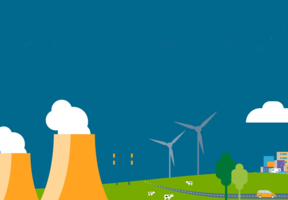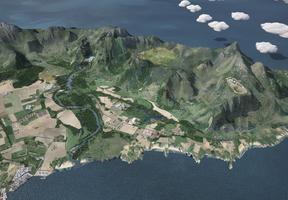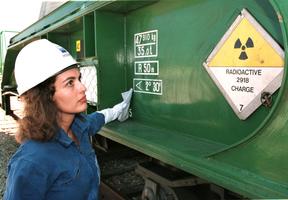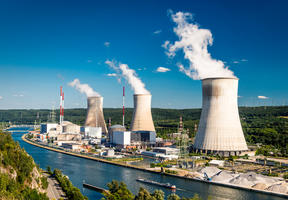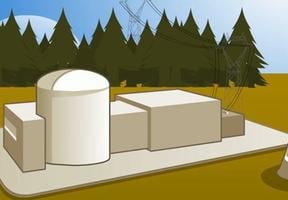From Chemical to Nuclear Reactions, the Energy Leap
Updated on 05.15.20235 min read
The term nuclear comes from the Latin word "nucleus", which means core. is released by the fission of the nucleus of certain heavy atoms. It brings into play far greater forces than those involved in the chemical reactions associated, for example, with the combustion of oil or gas. But because of its , this energy must be mastered and controlled by complex techniques.

© Breaking apart the nucleus of a uranium atom (a process known as fission) unleashes an enormous amount of energy in the form of heat. Nuclear reactors provoke fission to create steam, which is used to generate electricity. THINKSTOCK
The entire universe - planets, air, water, rocks, living beings - is composed of atoms. Invisible to the naked eye, atoms are themselves made up of several components.
Each atom comprises:
- A nucleus, which is formed of protons and neutrons.
- Electrons, which revolve around the nucleus at a very high speed1.
Although protons and electrons are far from each other, they are linked by their electrical charge, which is the same value for both, but positive for one (the proton) and negative for the other (the electron). Protons and electrons are equal in number, which makes the atom electrically neutral. Neutrons are neutral particles, but they play an important role in holding the nucleus together and contribute greatly to its mass.
Chemical reactions result from combining different atoms and are achieved by redistributing their electrons, which involves an entire system of forces, and therefore energy. When wood, or gas are burned, chemical energy is released.
Nuclear reactions take place at the level of the nucleus, which is very tightly held together. The bonds that unite the nucleus's particles are considerably stronger than those keeping electrons on their orbit. Breaking apart the nuclei of a gram of releases one million times more energy than burning one gram of fossil in a chemical reaction.
The number of protons - which is identical to the number of electrons - gives the atom its chemical properties. The lightest of the elements is (one proton). The heaviest natural element in the Earth's crust is uranium (92 protons). Two atoms having the same number of protons, but a different number of neutrons, are known as isotopes. Their chemical properties are identical, but their physical properties, particularly nuclear, are different.
Nuclear fusion and fission
Nuclear energy was identified in the 1930s, along with its two great reactions, fusion and fission.
occurs when two light nuclei of hydrogen fuse to form helium, a two-proton element. This is the reaction that keeps our sun shining. Humans have achieved nuclear fusion with hydrogen bombs and are attempting to recreate it in a controlled fashion through the project.
provides the basis for civilian nuclear power as it exists today. This involves breaking up large nuclei. An atom is called "fissile" when the nucleus can be broken into two pieces under the impact of a neutron. This frees other neutrons, which in turn trigger new fissions, freeing other neutrons, thus setting off a chain reaction2. With this reaction comes a major release of energy and an increase in the material's temperature. Nuclear reactors are designed to control this chain reaction and recover the energy in the form of in order to convert it into .
Fission is only possible with a small number of large nuclei. The list begins with thorium-232 (90 protons and 142 neutrons, and therefore 232 particles), but which has a low probability of fissioning when capturing a neutron. In nature, uranium-235 (92 protons, 143 neutrons) is the most efficient isotope. A process has therefore been devised to separate and concentrate the uranium-235 in natural uranium to obtain “enriched” fuel.
Uranium-238 (92 protons, 146 neutrons), which is very abundant in ore, is less efficient but can be converted in a nuclear reactor into plutonium-239, which is fissile (like all odd isotopes).
Radioactivity
When a nucleus’s balance is modified, either by man or by nature, there is an emission of electromagnetic particles or radiation, commonly called "rays", which are classified into several categories (alpha, beta or gamma). This is what is known as radioactivity. When properly controlled, radiation can have therapeutic effects, but, in high doses, it is dangerous for organic matter, particularly human tissue.

